

|
These will be the unorthodox tools that will
be used for this fluid exchange.
Before you ask, yes they do make a hand pump
for just this occation but this is more envolved
due to the extent of fluid to be removed and replaced.
|
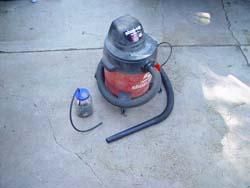 |
This is a reclamed mayonaise jar with two holes
cut in it. One is just large enought to fit a vacuum tube
and the other one is just smaller than the tube from
the shop-vac. This is to help get the best possible seal.
|
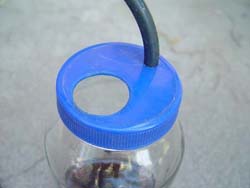 |
This side view shows that a good place to possition
the end of the tube is just below the midway point.
this is to reduse brake fluid splatter on the shop vac
hose and to recreate the shop-vac style of wet/dry
and not suck up any brake fluid.
|
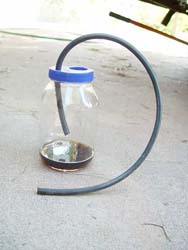 |
When inserted snuggly into the larger hole
the vacuum hose should be at least 1-2 inches
above the output of the vacuum tube.
|
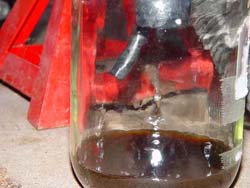 |
Just a shot showing that I like to put
the tire under the car, just incase.
|
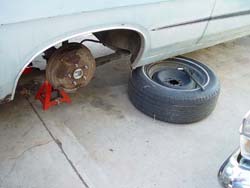 |
This axle is firmly planted on the jackstands
but I still leave the floorjack.
|
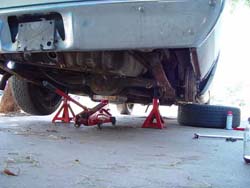 |
This is a typical bleed nipple. Make sure that
the vacuum tube you selected can fit over it.
|
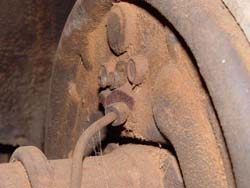 |
Some nipples are different diameters depending
on make, manufacturer and type of brake.
|
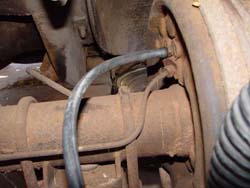 |
You can leave the master cylinder cover of because your
not going to pump the brake peddel like a normal bleeding.
This is also a good opportunity to keep putting in fresh
clean brake fluid.
|
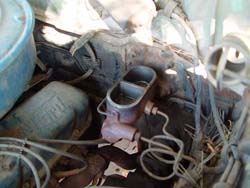 |
Once every thing is setup you can turn on the shop-vac
and loosen the bleed nipple.
Depending on how bad the lines were it might take a little
while for you to start seeing any fluid.
The first of the fluid will probably be pretty bad
(dark colored and very old). If there was alot of air
in the lines the fluid will drip out at first and move to
a steady stream. The new fluid will be moving through the
lines and the fluid will start clearing up. Make sure you
watch the level of the master cylinder and fill as nessesary!
|
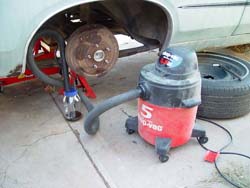 |
Once your satisfied that you old fluid is out
tighten the bleed nipple before you turn off
the vacuum to ensure you have no air in the line.
This should be repeated on all four wheels and your
good to go. If your in question about the feel of the
brakes you can now go through your normal bleeding routine.
|
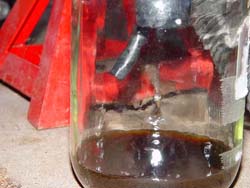 |
This page was last
updated on 9/Oct/2004.
For more information
before this site is updated:
Email me








